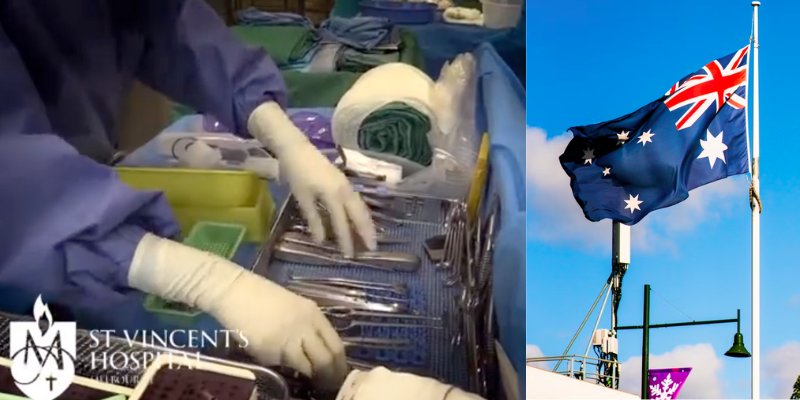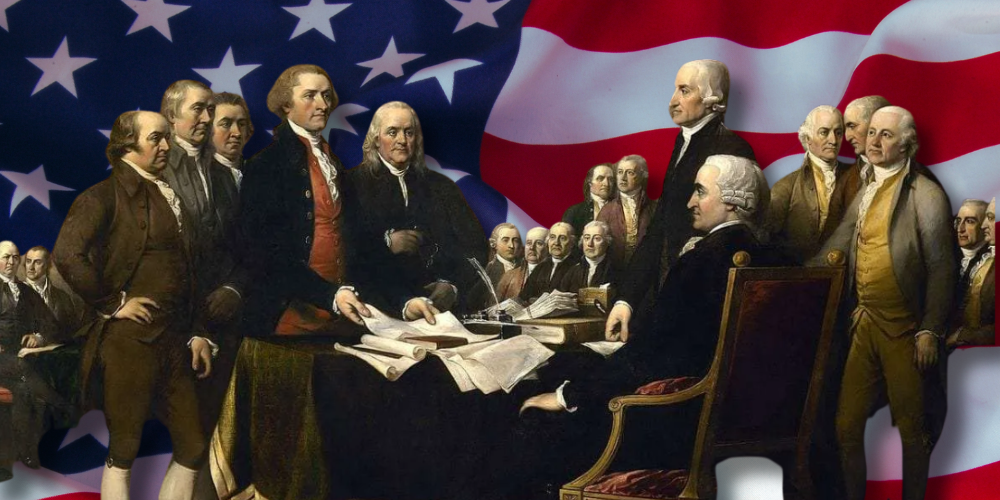This is an excerpt from Matt Palumbo's book Fact-Checking the Fact-Checkers: How the Left Hijacked and Weaponized the Fact-Checking Industry.
As has been emphasized many times already, the true purpose of fact-checking is to serve as a rubber stamp for censorship—and it works.
The New York Times reported in the aftermath of the 2020 election that Facebook would be taking even more steps to curtail right-wing sites: Employees proposed an emergency change to the site’s news feed algorithm, which helps determine what more than two billion people see every day. It involved emphasizing the importance of what Facebook calls ‘news ecosystem quality’ scores, or N.E.Q., a secret internal ranking it assigns to news publishers based on signals about the quality of their journalism.
...The change was part of the ‘break glass’ plans Facebook had spent months developing for the aftermath of a contested election.
According to unnamed sources quoted by the Times, the tools Facebook developed mostly affect right-leaning content, and they’d be making permanent some information control mechanisms designed solely for the 2020 election.
That’s been made evident, given the experiences of high-profile conservatives and libertarians such as Mark Levin, Dan Bongino, Candace Owens, and John Stossel. Even when the fact-checkers don’t have the facts on their side, they’ve learned to nitpick in a way to justify the censorship they desire.
In one case, Levin posted an article headlined, “‘America is dead’—Joe Biden actually said this at his Iowa rally,” days before the 2020 election, and the post was slapped with a fact-check by Facebook, attaching a PolitiFact article for supposed context.
The PolitiFact article gives context that Biden was actually talking about the coronavirus death toll, not the death of the country. This would be much-needed context if it wasn’t the case that the article Levin linked to correctly quotes Biden as speaking about COVID-19, making this fact-check completely pointless.
In other words, PolitiFact effectively “fact-checked” a headline they didn’t like, even though the contents of the fact-check were already clarified in the article they were fact-checking.
In another case, in September 2020, Levin was flagged for sharing a post from The Federalist’s Sean Davis that read: “BREAKING: On July 26, 2016, U.S. intel authorities learned that Russian intel knew of Hillary Clinton’s plans to cook up a scandal alleging that Trump was working with Russia. Obama was personally briefed on Russia’s knowledge of Clinton’s plans.”
The report was based on a letter from Director of National Intelligence John Ratcliffe from September 29, 2020. In that letter, Ratcliffe notes that the information could be Russian disinformation and that the claims regarding Hillary Clinton are alleged. However, on the same day, Ratcliffe later issued a statement clarifying that “this is not Russian disinformation and has not been assessed as such by the Intelligence Community.”
Lead Stories’ Alan Duke took issue with Davis and wrote up a fact-check that only cites a single source. That single source is a tweet from Rachel Cohen, a communications director for Democrat senator Mark Warner. In the tweet, Cohen said that the letter is Russian disinformation, and Duke just takes their word for it. No level of evidence is too flimsy when it tells the fact-checker what they want to hear.
Duke eventually updated the article with Ratcliffe’s denial that the claim was Russian disinformation, but left his analysis unchanged, with the headline still reading “DNI Letter On Russian Intel From July 2016 Does NOT Show ‘Russia Hoax’ Was ‘Hillary’s Plan.’” Clinton’s former campaign manager Robby Mook testified in the 2022 trial of Michael Sussmann mentioned earlier that she approved her campaign’s plans to spread a bogus claim that there was a backchannel between Trump Tower and the Russian bank Alfa Bank. We also now know for certain that on July 28, 2016, then-CIA director John Brennan briefed then-president Obama on Hillary Clinton’s plan to tie Trump to Russia as “a means of distracting the public from her use of a private email server.”
So desperate are the fact-checkers to dispel any narrative damaging to the Democrat establishment that they’ll even fact-check things that haven’t happened yet.
When Donald Trump suggested in a May 2020 tweet that California’s mail-in ballots would be “substantially fraudulent,” Twitter flagged the post for containing “potentially misleading information about voting processes and have been labeled to provide additional context around mail-in ballots.”
Trump’s tweet read, “There is NO WAY (ZERO!) that Mail-in ballots will be anything less than substantially fraudulent. Mail boxes will be robbed, ballots will be forged & even illegally printed out & fraudulently signed. The Governor of California is sending Ballots to millions of people, anyone.” He added that anyone “living in the state, no matter who they are or how they got there, will get one. That will be followed up with professions telling all of those people, many of whom have never even thought of voting before, how, and for whom, to vote. This will be a Rigged Election. No way!”
Even though it’s impossible to fact-check something that hasn’t yet happened, Twitter’s fact-checkers gave it a try and assured us that “there is no evidence that mail-in ballots are linked to voter fraud.” That came just after the U.S. government sent millions of stimulus checks to dead people, but pondering that they’d similarly drop the ball on mail-in ballots was too much for the fact-checkers.
Underneath Trump’s tweet, Twitter added a disclaimer that reads: “Get the facts about mail-in ballots.” The disclaimer claims, “Trump falsely claimed that mail-in ballots would lead to ‘a Rigged Election.’ However, fact-checkers say there is no evidence that mail-in ballots are linked to voter fraud” and links to articles from the Washington Post, CNN, and NBC calling Trump’s claim “unsubstantiated”—because they say so, and we’ll have to take their word for it.
The “fact-checks” are based on conflating mail-in voting with absentee voting (which the fact-checkers are arguing isn’t susceptible to fraud). As the Wall Street Journal’s Dustin Volz wrote on Twitter: “There was an error in Twitter’s fact check of Trump’s vote-by-mail tweets, underscoring the challenge social media platforms face trying to arbitrate truth. It was corrected after an elections professional notified the company (and me) about the mistake.”
Not only was Twitter comparing two different types of voting, the same day of that botched fact-check, news broke that a West Virginia USPS employee was charged with attempted absentee ballot application fraud. Which is odd, because the fact-checkers declared mere hours earlier that such behavior was impossible.
Seemingly nothing is exempt from a fact-check. When Hillsdale College began advertising a course through Facebook on Executive Director of the World Economic Forum Klaus Schwab and the Great Reset, a “false information” tag was added to their advertisement, displaying a fact-checking reading, quite amusingly, “FACT CHECK: Fact Check: ‘The Great Reset’ Is NOT A Secret Plan Masterminded By Global Elites To Limit Freedoms And Push Radical Policies.” They’re technically right in that it’s not secret—as the man spearheading it, Klaus Schwab literally has published a book called The Great Reset.
The Media Research Center (MRC) has been tracking censorship through its “CensorTrack” data, and found that across seven Big Tech platforms (Facebook, Twitter, YouTube, Instagram, TikTok, LinkedIn, and Spotify), there were over 144 million times flagged that social media users had information hidden from them in just the first quarter of 2022.
They call this “secondhand censorship,” which they define as the number of times that users on social media have information blocked from them. In the case of Trump being banned from Twitter, his ninety million followers missed out on his average of eighteen daily posts, or secondhand censorship of over 1.6 billion times.
The biggest censors, according to its data, are Facebook, YouTube, and Twitter.
The bar for what’s censorable is on the floor. Among the cases the MRC documented is conservative host Matt Walsh being suspended from Twitter for tweeting the true statement that the greatest female Jeopardy champion, best female college swimmer, and first four-star admiral in the U.S. public health service are men. On transgender-related issues, the MRC noted twenty-two cases of notable figures being censored, resulting in nearly twelve million cases of secondhand censorship.
Anything that went counter to the narrative on COVID-19 was also quickly censored. YouTube kicked Dan Bongino off for questioning the efficacy of masks by quoting studies casting doubt on them. His Facebook page has also been flagged for sharing similar information, resulting in secondhand censorship affecting users nearly 1.8 million times in just the first quarter of 2022. As is evident in many of the “fact-checks” that his page has been slapped with, the censors’ conclusion was determined before their reasoning.
Posts from the Dan Bongino Facebook page routinely dominate the list of the most shared posts on the platform and, as such, have made him a prime target for the fact-checkers whose mission is to prevent the proliferation of conservative narratives. PolitiFact’s CEO Angie Drobnic Holan even singled Bongino out for blame in an article complaining about how PolitiFact reporters face “online harassment,” which in this context means people making fun of their laughable fact-checks when they’re mocked and exposed. In doing so, she comes just short of admitting that they specifically target his page for faux fact-checks.
In some cases, posts are flagged for claims they didn’t even make.
Bongino posted a video to his page in May 2022 where he reacted to a video of Pfizer’s CEO talking about microchips in pills that was recorded in 2018. Bongino made it clear that the video was years old and that CEO Albert Bourla was speaking about a drug for schizophrenia. In the video, Bourla talks at a World Economic Forum event about how they have an FDA-approved drug that contains a digital sensor that can track whether people are taking their medicine.
While many others shared the clip of Bourla’s comments online and gave incorrect context, trying to make it seem like he was talking about Pfizer’s COVID-19 antiviral pill, Bongino didn’t present it as such and explicitly stated, “Now to be clear, this clip is often misconstrued and labeled wrong. [Bourla is] not talking about a COVID pill, he’s talking about a schizophrenia pill. What I’m trying to tell you is...they can invent a pill that does that if they choose—I put that clip in there to show you that the technology is out there if something were to happen in the future more severe than monkeypox or COVID, the technology is out there and being developed to implement this surveillance future where these pills can actually talk back.”
And despite that, the video was slapped with a fact-check by Facebook from FactCheck.org claiming the video was “missing context.” “FDA-Approved ‘Electronic Pill’ Isn’t Evidence That COVID-19 Vaccine ‘Microchip’ Conspiracy Is ‘Proven,’” read the article headline that in no way contradicts the contents of the video.
Among the most ridiculous cases where Bongino’s posts were branded false was one article headlined, “Pelosi Admits Dems Have Been Trying to Impeach Trump for the Last ‘Two and a Half Years.’” The article quoted Pelosi directly and even includes video of her saying as much, but because she hasn’t literally been carrying out an impeachment process for the past two and a half years, the claim was rated false.
On another occasion, Bongino’s page was fact-checked by Lead Stories after linking to an article reporting on Nancy Pelosi quoting a National Counterintelligence and Security Center report that concluded China would rather Biden win the 2020 U.S. presidential election.
The report stated: “We assess that China prefers that President Trump—whom Beijing sees as unpredictable—does not win reelection. China has been expanding its influence efforts ahead of November 2020 to shape the policy environment in the United States, pressure political figures it views as opposed to China’s interests, and deflect and counter criticism of China.”
Nancy Pelosi quoted the report to CNN’s Dana Bash, telling her, “The Chinese...what they said is [that] China would prefer [Biden]. Whether they do, that is their conclusion. That they would prefer Joe Biden.” In response to this setup, Lead Stories fact-checker Sarah Thompson grasps at straws, arguing that just because China wants Trump to lose doesn’t mean they want Biden to win. Does she think China was hoping the libertarian candidate would finally make a showing?






